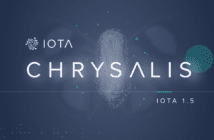The cryptocurrency exchange Binance was founded in mid-July 2017. At the same time, Binance also held its ICO for the Binance Coin (BNB) to finance the successful launch of the exchange.
The exchange was originally founded in China. But after the regulatory climate changed there, Binance moved its servers and headquarters to Japan. In 2017, the platform achieved enormous success within a very short time and within half a year rose to become the largest cryptocurrency exchange by trading volume.
The founder, Changpeng Zhao (“CZ”), has a vision to provide business services to every single person in the world. Since July 2018 there have been over 10 million registered users on the platform, over 150 tradable crypto currencies and more than 380 listed trading pairs.
What is the Binance Coin (BNB)?
The Binance Coin (BNB) was created by the exchange. Binance has issued a total of 200 million BNBs. Half of this was distributed through a public ICO, 40% went to the Binance team and 10% was sold to angel investors. The ICO took place from 14 to 27 July 2017, with all 100 million BNBs sold.
BNB can be used on the crypto currency exchange as a means of payment for fees. In order to boost the ICO and thus the financing of the project, Binance has undertaken to grant discounts on the use of BNBs for the first four years. Thus, users of the exchange who use the BNB receive 50% on all fees. In the second year it is still 25 %, in the third year 12.5 % and in the fourth year 6.75 %. In addition, BNBs also serve as loyalty programmes. BNB token holders can also receive other rewards within the exchange.
In addition, as part of the white paper on the Binance Coin, the company has undertaken to buy back half of all BNBs – 100 million – and then destroy them (“Binance Coin Burn“). This is a thank you to the early investors who have supported Binance from the very beginning. The purpose behind this is that as the supply of BNBs decreases, the price of a BNB token will increase. The investors of BNB are rewarded by a rising BNB price.
The commitment is that Binance will buy back 20% of the company’s profits in BNBs each quarter and then burn the BNB until ultimately only 50% of all initial BNBs are in circulation. The so-called “Binance Coin Burn” is always announced later by Binance. The first “Coin Burn” took place in October 2017 and destroyed 986,000 BNBs. During the second Binance Coin Burn, 1.8 million BNBs were burned, while the third burned 2.2 million.
Binance Decentralized Exchange
In March 2018, Binance announced the development of a decentralized cryptocurrency exchange where various crypto-currencies can be exchanged without an intermediary. Although there are already a few decentralized exchanges. However, these have had little success so far. The Binance Decentralized Exchange (Binance DEX) may have the opportunity to change this by using its prestigious name.
Subscribe to our daily newsletter!
No spam, no lies, only insights. You can unsubscribe at any time.
From the user’s point of view, decentralised exchanges have considerable advantages. Probably the most important point is that users retain control over their own crypto currencies in the form of the private key. In addition, the trade is also anonymous, since there is no Know Your Customer (KYC). A ban on crypto currencies is not possible through decentralized exchanges, as there is no single point of failure. There’s no central server a government can take out. Furthermore, there is no company that can be banned by a government. Furthermore, a DEX is cheaper for users, as there are no fees.
If Binance DEX were to be a similar success to Binance, the Binance Coin (BNB) at DEX could once again assume numerous functions and tasks. The 30% rise in BNB’s share price in March 2018, when Binance DEX was announced, should also be interpreted in this light.





